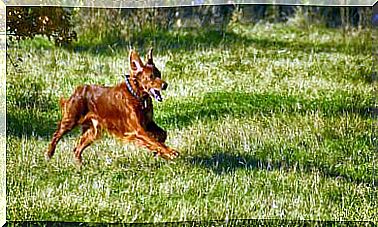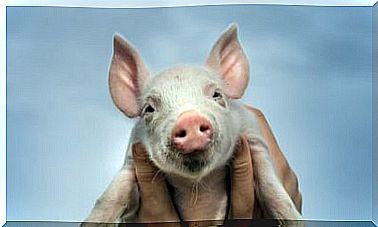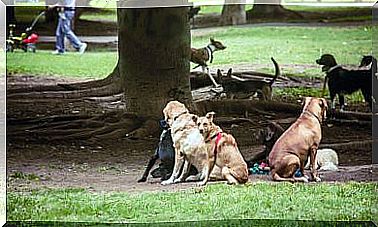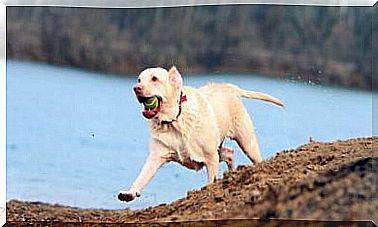The Origin Of The Dog: Theories
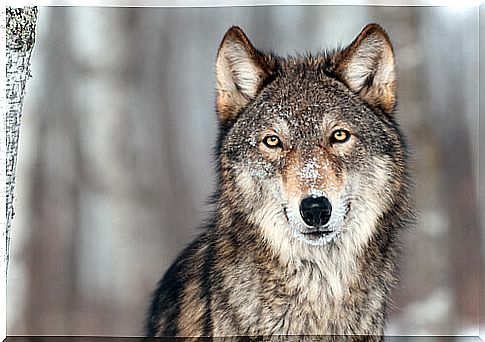
Taking into account the close relationship that man has with dogs, it would be very difficult to imagine that this has not existed forever. So it is that specialists from different disciplines have wondered, over the years, about the origin of the dog and about how it came to approach human beings.
Some information about the origin of the dog
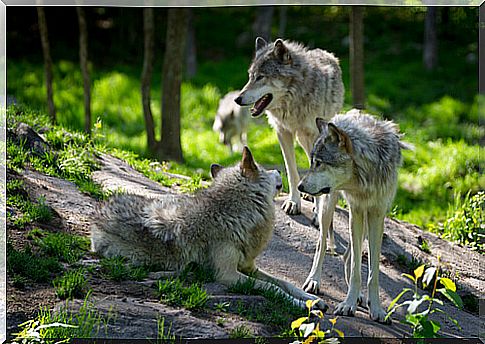
The theories that were considered were diverse. At first, due to physical and behavioral characteristics, it was thought that the ancestors of our four-legged friends could be in different species :
- Coyotes
- Jackals
- Wolves
But the advances in genetics cleared up all doubts: only the dog and the wolf have a genetic similarity of 99.8%.
“Even the smallest poodle or chihuahua is still a wolf at heart.”
-Dorothy Hinshaw Patent –
A single origin and a great diversity of races
There are few species that have as many morphological variations as the furry ones. There are hundreds of breeds of dogs and the differences are notable in terms of:
- Weight
- Size
- Colour
- Fur
- Behaviors
- Physical aptitudes
But how did some wolves become the dogs they are today? The answer is domestication.
From the ancient wolf to the current dog
The domestication process is known as that by which a living being modifies its genetic structure due to its adaptation to the environment created by humans.
Although most domestic animals are herbivores (horses, cows, sheep), the wolf seems to be the first animal that adapted to the company of man. In addition, he did so “voluntarily.”
Thus, those first wolves that approached human beings, gave rise to the dogs of today, through coexistence and the selection made.
An old relationship
Thus the question arises: when did this bond between man and the domesticated wolfdog begin?
Research managed to trace this relationship back to the Middle Palaeolithic: about 40,000 years.
In addition, there are paleontological references to wolf bones along with hominids dating back 200 thousand years. But so far it is not possible to determine precisely when wolves were domesticated to begin to be considered dogs.
Mutual convenience
The relationship between man and primitive dogs was not one of submission, as happened with most of the domesticated species. In this case, it was a relationship of mutual interest.
While the first dogs guarded the villages and collaborated with the hunt, they obtained protection from man from other predators and easily obtained food from the scraps and waste of the animals they had helped to capture.
During the domestication process, the specimens with less aggressiveness and with greater tolerance to contact with man were surely selected, until they went from the ancient “modified” wolf to the dogs of our days.
Coppinger’s theory
Biologist Raymond Coppingger, for his part, is convinced that the origin of the dog was due to natural selection and not because of human intervention, since – he affirms – no one has been able to domesticate wolves with more than two weeks of age. life.
The specialist believes that, when the first towns were formed in the Stone Age, animal waste and human waste began to accumulate, which attracted the wolf, which was in search of food.
Thus, the wolves that stayed closer to humans began to transform until an animal known as a proto-dog emerged.
Characteristics of proto-dogs
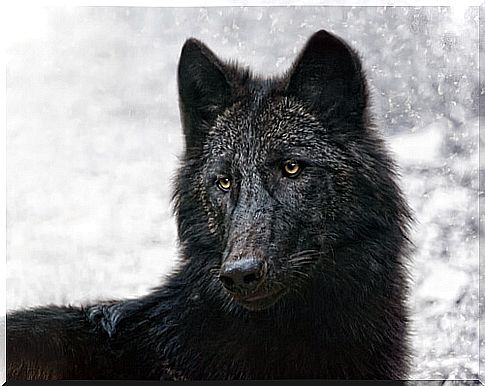
Among the main changes that took place so that these wolves became dogs we can mention:
-The size of the skull, brain and body were reduced
-The muzzle was shortened
-Predator teeth disappeared
According to Coppinger’s theory, the ancient humans domesticated, then, an animal that was no longer a wolf, but a dog, which began a rapid evolution until it reached the diversity of today’s canines.
